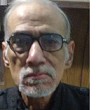Limitation period for filing civil appeal
 AK New Delhi
(Querist) 25 October 2013
This query is : Resolved
AK New Delhi
(Querist) 25 October 2013
This query is : Resolved
My relative filed a suit for possession by partition against me at faridabad court in lower court. I lost the case and appealed to the Sessions court, faridabad. I again lost it in the sessions court. Now I shall file a Leave to Appeal in the Punjab and Haryana High Court. Can you tell me the limitation period (no. of days) I have in hand to file the appeal in High Court?
 Devajyoti Barman
(Expert) 25 October 2013
Devajyoti Barman
(Expert) 25 October 2013
You have posted three different queries and have asked on behalf of friend and relative.
 Nadeem Qureshi
(Expert) 25 October 2013
Nadeem Qureshi
(Expert) 25 October 2013
within 30 days after receiving the copy of judgment
 ABDUL RAZIQUE
(Expert) 25 October 2013
ABDUL RAZIQUE
(Expert) 25 October 2013
generally for filing appeal/application after passed a decree, there is mention a stipulated time for filling.
Any suit/application for which no period of limitation is provided elsewhere in this Schedule. Three years When the right to sue accrues.
 Nadeem Qureshi
(Expert) 26 October 2013
Nadeem Qureshi
(Expert) 26 October 2013
Delhi High Court
Banwarilal And Sons Pvt. Ltd. vs Union Of India And Ors. on 17 April, 1972
Equivalent citations: AIR 1973 Delhi 24, 8 (1972) DLT 285
Author: V Deshpande
Bench: V Deshpande, S Rangarajan
JUDGMENT
V.S. Deshpande, J.
(1) The appellant's building was requisitioned by the Government under section 3 of the Requisitioning and Acquisition of Immovable Property Act, 1952 and a sum of Rs. 3212.50 was offered to the appellant as compensation per month for the use of the building. As the appellant did not agree to accept the said amount, the compensation payable to the appellant was determined by Shri G. R. Luthra (Judge, Small Causes Court, Delhi) acting as arbitrator under section 8 of the Act at Rs. 4,658.00 per month. In the appeal against the award of the arbitrator, V. D. Misra, J. of this Court increased' the amount of compensation to Rs. 6,423.00 per month under section 11 of the Act. The Government was also ordered to spend a sum of Rs. 6,423.00 per year for the maintenance and repairs of the building.
(2) Limitation for a further appeal was as follows: -
(A)Appeal to a Division Bench of this Court under clause 10 of the Letters Patent - 30 days; and
(b) Appeal to the Supreme Court under Article 136 of the Constitution - 90 days.
(3) The judgment of the learned Single Judge was delivered on 8-12-1971. The application for a certified copy of the judgment was made on 15-12-1971. The copy was prepared on 13-1-1972 and was obtained by the appellant on 14-1-1972. Excluding the time of 29 days spent in obtaining the certified copy and the day on which the judgment was delivered, the period of limitation of 30 days for filing an appeal in the High Court expired on 7th of February 1972. The appeal in the High Court was filed on 19th of February 1972. The appellant made an application under section 5 of the Limitation Act, 1963 for condensation of delay in filing the appeal on the ground that he had sufficient cause for not prefering it within the prescribed period of limitation. The explanation of the delay given by the appellant was two fold, namely:--
(1)On 8-12-1971 when the learned Single Judge delivered the judgment under appeal, the appellant requested Shri Radhey Mohan Lal, Advocate, to file an appeal before a Division Bench of this Court. But the appellant was told by Shri Lal that the appeal lay to the Supreme Court and the period of limitation for filing the appeal there was 90 days. Shri G. S. Vohra, learned counsel for the appellant, argued that there was bona fide doubt whether the appeal lay to the Supreme Court or to the High Court and the mistake of law committed by Shri Lal was sufficient cause for condensation of part of the delay in, filing the appeal. (2) The appellant then tried to engage Shri Tarkunde, Senior Advocate on 1-2-1972 and later entrusted the case to Shri D. V. Patel, Senior Advocate on or about 7-2-1972 to file the appeal to the Supreme Court. Shri Patel opined after a couple of days (that is on 9-2-1972) that the appeal to the Supreme Court did not lie and that the only appropriate remedy was to file the letters patent appeal in the High Court. The time for filing the appeal to the High Court had already expired by this date. In view of the conflict of opinions, the appellant entrusted the papers to Shri Bishen Narain, Senior Advocate, on or about 10-2-1972 who opined on 17-2-1972 that appeal lay to the High Court and not to the Supreme Court. The appellant then again asked Shri R. M. Lal on 18-2-1972 to file an appeal in the High Court but he was still of the view that appeal to the High Court was not competent and, therefore, declined to file the appeal. The appellant then approached Shri G. S. Vohra, Senior Advocate, on 18-2-1972 without delay and Shri Vohra did so on 19-2-1972.
(4) The first ground explains the delay up to 9-2-1972. Did it amount to "sufficient cause" within the meaning of section 5 of the Limitation Act till then ? As observed by the Supreme Court in Mata Din v. A. Narayanan,
"THElaw is settled that mistake of counsel may in certain circumstances be taken into account in condoning delay although there is no general proposition that mistake of counsel by itself is always a sufficient ground. It is always a question whether the mistake was bona fide or was merely a device to cover an ulterior purpose such as laches on the part of the litigant or an attempt to save limitation in an underhand way."
(5) From a judgment of a single judge lies to the Division Bench of the High Court under clause 10 of the Letters Patent applicable to the High Courts of Lahore, Punjab & Haryana and Delhi read with sec. 5(1) of the Delhi High Court Act, 1966 if the learned Single Judge was acting in exercise of the ordinary jurisdiction of the High Court On the other hand, if the learned Judge acted in special jurisdiction or as an arbitration tribunal or a persona designata, then the appeal would not lie to the High Court as above. But the decision of the learned Single Judge would still be a "determination" within the meaning of Article 136 of the Constitution and it was open to the Supreme Court to give special leave for filing such an appeal. In Hans Kumar v. Union of India, a judgment of a learned Single Judge of the
High Court in an appeal against the award of the arbitrator preferred under section 19(l)(f) of the defense of India Act, 1939, was held to be only an award and not to be a "judgment" within the meaning of sections 109 and 110 of the Code of Civil Procedure and, therefore, not appealable to the Supreme Court there under. In analogous context, a similar view was expressed by the Punjab High Court in Fazilka Dab-wall Transport Company v. Madan Lal, and in Gopal Singh v. State of Punjab, Air (1957) Punjab 615 (4) purporting to follow the Privy Council decision in Rangoon Botatoung Co. Ltd. v. Collector of Rangoon, (1912) 39 I.A. 197 (5). But in Collector of Varanasi v. Gauri Shanker, the Supreme Court disagreed with their
previous decision in Hans Kumar's (2) case and held that in hearing the appeal against the award of an arbitrator given under section 19(l)(f) of the defense of India Act, the High Court acted as the High Court and not an arbitration tribunal. Its decision was, therefore, a "determination" under Article 136 of the Constitution. The Supreme Court did not have the occasion to consider the further question whether the judgment of the High Court, for the same reason, would be a "judgment" within the meaning of sections 109 and 110 of the Civil Procedure Code and as such appealable there under- A Full Bench of this Court, however, reviewed the whole case-law in Municipal Corporation of Delhi v. Shri Kuldip Lal Bhandari & Others, 2nd (1969) Delhi 497 (7) and pointed out at 507 that the decision of the Supreme Court in Hans Kumar's (2) case was based on two premises, namely:-
(1)That the judgment of the learned Single Judge was not given in the ordinary jurisdiction of the High Court but in a special jurisdiction, and (2) Therefore, it was not a "judgment". These two premises were inseparable from each other. The first premise is no longer valid in view of the subsequent decision of the Supreme Court in Collector of Varanasi v. Gauri Shanker, . It would follow,
therefore, that the second premise also has ceased to be valid. It was held by the Full Bench, therefore, that a judgment of a learned Single Judge in such circumstances would be a "judgment" within the meaning of clause 10 of the Letters Patent and would be appealable there under to a Division Bench of the High Court. The abovementioned Full Bench decision of this Court was soon followed by a Full Bench of the Punjab & Haryana High Court in Shanti Devi and others v. General Manager, Haryana Roadways etc., 1971 Punjab Law Reporter 543, (8) overruling the previous decision of that court in Fazilka Dab-wall Transport Company's (3) case.
(6) If Shri R. M. Lal was under the impression that the judgment of the learned Single Judge given in an appeal under section 12 of the Requisitioning and Acquisition of Immoveable Property Act, 1952 was not appealable to a Division Bench of the High Court, then the only reason for such belief could be the decision of the Supreme Court in Hans Kumar's (2) case and perhaps the Punjab High Court's decisions in Gopal Stngh v. State of Punjab, 2nd (1957) Punjab 615 (4) and Fazilka Dabwali Transport Company v. Madan Lal, . But the view taken in these cases could no longer be regarded as correct after the decision of the Supreme Court in Collector of Varanasi v. Gauri Shanker, followed by a Full Bench of this Court in
Municipal Corporation of Delhi v. Kuldip Lal Bhandari and others, Air (1969) Delhi 497 (7) and the Full Bench decision of the Punjab & Haryana High Court in Shanti Devi and others v. General Manager, Haryana Roadways etc., 1971 Plr 543. (8)
(7) It is in the light of this position of the case-law that the 'test laid down by the Supreme Court in Mata Din v. A. Narayanan (1) referred to above, is to be applied by us. Was the mistake of Shri R. M. Lal bona fide? Or is this only a device by the appellant to cover up his laches and to save limitation in an underhand way ? Shri R. M. Lal is a very able counsel of long standing. If he could be aware of the older decisions of the Supreme Court and the Punjab & Haryana High Court from 1957 to 1967 taking the view that the appeal did not lie to the High Court in such circumstances, then with equal reason he must have also become aware of the subsequent decisions of the Supreme Court, of this High Court and of the Punjab & Haryana High Court from 1968 to 1971 overruling the previous view. A counsel of the standing and ability of Shri R. M. Lal is presumed to keep himself reasonably abreast of the case-law. The last decision supporting the old view was delivered in 1967. The new view was reported from the Supreme Court in 1968, from this Court in 1969 and from the Punjab & Haryana High Court in 1971. If the new view was a very recent one, it could perhaps be argued that Shri Lal did not have sufficient time to acquaint himself with it. Similarly, if the new view was not widely known, one could believe that the counsel may not have become aware of it. But the new view was propounded by the Supreme Court in 1968 and by the Full Benches of this Court and Punjab & Haryana High Court in 1969 and 1971. All these decisions were expressly directed towards disapproving the old view. Sufficient time has passed after these decisions propounding the new view were reported. Thereafter no reasonable counsel could have gone by the old view. Every counsel practicing in this court as Shri R. M. Lal does with such distinction must have become aware of the new view for a long time before the judgment under appeal has been delivered. Shri R. M. Lal has not filed an affidavit nor has he made a statement at the bar that he was really under a mistaken conception of law on this point. The affidavit filed by the appellant is self-serving. It cannot be believed because it is opposed to all probabilities. On the first ground, therefore, we do not believe that Shri R. M. Lal advised the appellant that the appeal Jay to the Supreme Court and not to the High Court. On this view, therefore, the first two days of the delay, namely, 8th and 9th of February 1972 have not been adequately explained. Alternatively, if he really gave such advice, then he was negligent and his mistake was not bona fide. No sufficient cause existed, therefore, as to why the appellant could not file the appeal prior to t 8th and 9th of February 1972, namely, on the 7th of February 1972.
(8) The law about the second ground of delay may be stated as follows:
ONthe one hand, section 5 of the Limitation Act should be so construed as to advance the remedy of appeal and not to defeat it (Mukhtiar Ahmed v. Himal Lal Bhatt, 1968 Delhi Law Times 306 (9) per I.D. Dua, C.J. as his Lordship then was) unless there is "want of bona fides, inaction or negligence" on the part of the appellant (Shakuntala Devi Jam v. Kuntal Kumari and others, ).
(9) On the other hand, it is only so long as the period of limitation prescribed for the appeal is still available that expedition or diligence may not be expected of the appellant. He may choose to file the appeal on the last day of the limitation without being open to the criticism that he idled away the rest of the period of limitation till then. (C. F. Angadi v. Y. S. Hirannayya, citing from Halsbury's Laws of England).
(10) But once the period of limitation expires then the appellant has to explain "the delay made thereafter day by day" to use the words of Gajendragadkar, J. in Ramlal and others v. Rewa Coalfields Ltd., towards the end of column 1. The appellant has,
therefore, to explain every day of the delay in filing the appeal from 8th of February to the 19th of February 1972. We have already found above that he has' failed to explain why the appeal was not filed on the 8th or 9th of February 1972. The appellant, as a layman, was interested simply in filing the appeal in time. He was not concerned as to whether the appeal could be filed in the High Court or in the Supreme Court. He was, however, aware or is presumed to be aware that the appeal in the High Court had to be filed at the latest on the 7th of February 1972. To show "sufficient cause" for not filing the appeal from the 8th February 1972 till the 18th of February 1972 he has to show that he was not guilty of "want of bona fides, in action or negligence". He says that he became aware on 9-2-1972 from Shri D. V. Patel, Senior Advocate, that appeal lay to the High Court. What would be the reaction of a reasonable man on hearing this opinion ? He would say that the period of limitation for filing the appeal to the High Court is the only period of limitation of which he has to take care. For, it is that period which has expired and it is the expiry of that period which is making it more and more difficult every day for him to show sufficient cause for not filing the appeal. The appellant is a wealthy person and on his own admission he has consulted a number of eminent counsel like Shri R. M. Lal, Shri Tarkunde, Shri D. V. Patel and Shri Bishen Narain in addition to Shri Prem Behari Lal. It was, therefore, a matter of common sense for him to know that the best course for him was to file the appeal in the High Court to save the same being time barred by the shorter period of limitation. If the office of the High Court were to object that the appeal did not lie there or if the High Court was to take that view then there was still time to file the appeal in the Supreme Court. In fact, the memorandum of appeal could be returned to the appellant to be filed in the Supreme Court. It would indeed be a good ground under section 14 read with section 5 of the Limitation Act for the condensation of any delay that may take place in filing the appeal to the Supreme Court (Sunderbai and another v. The Collector of Belgaum and others, (1918-19) 46 Indian Appeals 15 at 22) (13). On the appellant's own admission, therefore, when he became aware that the appeal lay to the High Court he should have filed the appeal in the High Court at the latest on the 10th of February 1972.
(11) Did he do so? No. Instead he says that "in view of the conflict of opinion as aforesaid, I entrusted the papers to Shri Bishen Narain, Senior Advocate, for advice and necessary action on or about 10-2-1972". If by these words, the appellant means that he wanted Shri Bishen Narain to resolve the conflict of opinions or he wanted to be sure himself by consulting Shri Bishen Narain as to which of the two opinions expressed by Shri R. M. Lal and Shri D. V. Patel was the correct one, then he was not acting as a reasonable man whose sole object should have been to file the appeal in time. For, he had nothing to do with the conflict of opinions and he had no business to find out which of the two. views are correct. As against the opinion of Shri R. M. Lal, Advocate, he had the opinion of Shri D. V. Patel, Senior Advocate, that the appeal lay to the High Court. Was it not sufficient for him to be alarmed ? Did it not make him aware that he had already allowed the period of limitation to expire? What possible reason could he have to delay the filing of the appeal in the High Court thereafter ? Did he not know that it was his immediate interest to see that the appeal is filed in the High Court ? For, the same appeal could be later filed in the Supreme Court if it was found not to be competent in the High Court. Even if it is assumed in favor of the appellant that both the views were equally plausible, it was simple common sense to file the appeal immediately in the High Court. That would have saved any further loss of limitation without in the least endangering the right to file the appeal in the Supreme Court if the appeal were to be found incompetent in the High Court. Absolutely no explanation is given, in the affidavit filed by the appellant as to why he did not do so nor did his learned counsel at all refer to this aspect during his argument. We are of the view, therefore, that the appellant had no business to consult Shri Bishen Narain or any other advocate on 10-2-1972 and thereafter. The appellant was bound to file the appeal in the High Court on 10-2-1972 at the latest as a reasonable person. Firstly, his alleged consultation with Shri Bishen Narain and Shri R. M. Lal after 10-2-1972 and till 18-2-1972 is not believable. This plea lacks bona fides. Secondly, even if the appellant really wasted the time from 10-2-1972 to 18-2-1972 in consulting Shri Bishen Narain and Shri R. M. Lal, then such consultation without filing the appeal in the High Court was wither inaction or negligence on his part.
(12) The appellant says that even after Shri Bishen Narain advised him, he again went to Shri R. M. Lal to ask him to file the appeal. This means that he had approached Shri Bishen Narain merely for the academic purpose of finding out which of the two views of Shri R. M. Lal and Shri D. V. Patel was the correct one. As already stated above, the petitioner had no business to do so. On the contrary, he was expected to file the appeal immediately in the High Court once he became aware on 9-2-1972 from Shri D. V. Patel that the appeal had to be filed in the High Court. Further, for this merely academic exercise the appellant says that he left the papers with Shri Bishen Narain from 10-2-1972 to 17-2-1972. This spending of so much time on such a useless purpose was completely unjustified.
(13) After the expiry of the limitation, the appellant was bound to explain the delay in the filing of the appeal "day by day". This he has signally failed to do on either of the two grounds urged by him. These pleas are merely "an attempt to save limitation in an underhand way" on his part. We, therefore, dismiss his application under section 5 of the Limitation Act. Consequently, the appeal is dismissed as barred by time.
 Nadeem Qureshi
(Expert) 26 October 2013
Nadeem Qureshi
(Expert) 26 October 2013
(2) Limitation for a further appeal was as follows: -
(A)Appeal to a Division Bench of this Court under clause 10 of the Letters Patent - 30 days; and
b) Appeal to the Supreme Court under Article 136 of the Constitution - 90 days.
 prabhakar singh
(Expert) 26 October 2013
prabhakar singh
(Expert) 26 October 2013
You have stated that you lost to a suit of partition filed against you then you filed (first)appeal before District Judge which too has been dismissed and want file (second)appeal in HIGH COURT and asking
WHAT IS THE LIMITATION?
If this is the Query then to know it you need to look into Article 116 (a)THE LIMITATION ACT WHERE IN TIME PROVIDED FOR IS 90 DAYS FROM THE DATE OF JUDGEMENT(but time taken by court in preparing copy and notifying it ready for delivery would be excluded).
 AK New Delhi
(Querist) 26 October 2013
AK New Delhi
(Querist) 26 October 2013
Mr Prabhakar,
My counsel has told me to file "Regular second appeal" within 90 days from the date of receipt of the copy of the Judgment. So it is 90 days?
 prabhakar singh
(Expert) 26 October 2013
prabhakar singh
(Expert) 26 October 2013
Dera Author Shree AK!
What i have told you is the exact legal position on the query.
Time runes from the date of judgement
where from only time consumed by court
in preparing the copy is deducted.
In my opinion it is wrong to understand
that 90 days would be counted from the
date you received the copy.
Let me illustrate.suppose a judgement was passed yesterday on 25th oct.2013.
Then time to file appeal with in 90 days
would fall on 24th Jan 2014.
Suppose copying office consumed 15 days in preparing the copy then it would be an additional time for you and appeal could
be filed up to 8th Feb.2014.
But where you do not apply for copy with in limitation say up to 24th Jan.2014,no such benefit would accrue to you.
 Rajendra K Goyal
(Expert) 26 October 2013
Rajendra K Goyal
(Expert) 26 October 2013
Well advised, Also generally the limitation is mentioned in the order against which appeal is to be filed.
 Raj Kumar Makkad
(Expert) 26 October 2013
Raj Kumar Makkad
(Expert) 26 October 2013
The limitation in the given case is 90 days.
 AK New Delhi
(Querist) 25 October 2013
This query is : Resolved
AK New Delhi
(Querist) 25 October 2013
This query is : Resolved
 AK New Delhi
(Querist) 26 October 2013
AK New Delhi
(Querist) 26 October 2013
